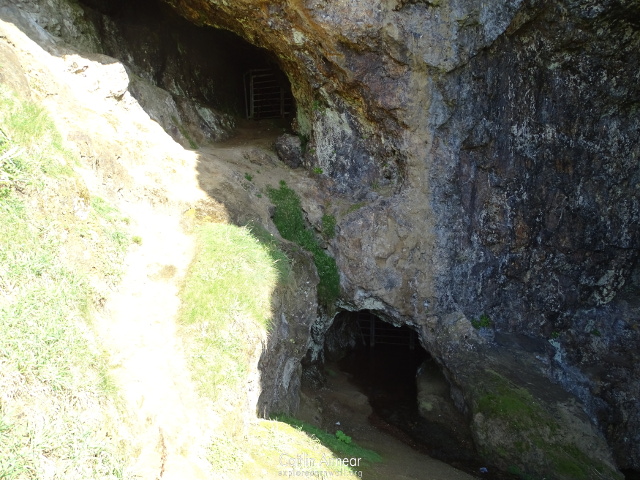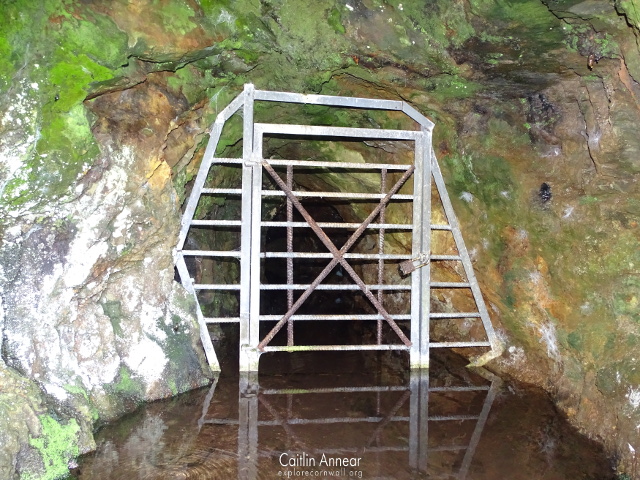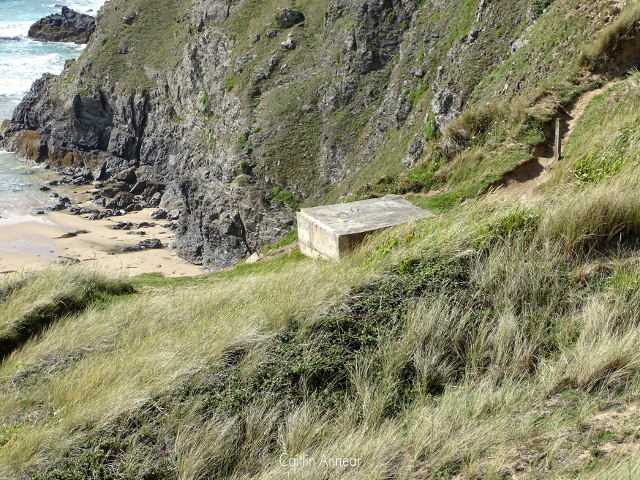At the northern end of Perranporth beach smuggled in the cliff is the scant remains of Gravel Hill Mine.

Once part of Penhale Iron Mine, this small working remained an iron mine throughout its life, although under several different ownerships. While the mine was at work from 1724, little to no information remains from its earlier periods. By the 1860’s it had a 11.5” puffer engine at work, which powered the incline down to the main mine entrance. Ore was then taken from here to the Gannel for shipment.

In 1872 it was under the ownership of Cornish Consolidated Iron Mines Corporation, under which it was reached by the Cornwall Minerals Railway; Gravel Hill was the terminus of the Shepherd’s to Gravel Hill branch which was constructed in 1874 and was used until 1888. The line of the railway now roughly follows the road paved through the dunes.
From 1877 the mine was then owned by Great Perran Iron Ore and Iron Company Ltd and by 1878 was under New Perran Mineral Company Ltd. While the output is reported up until 1882, there is little extra information about this mine, suggesting it was likely abandoned at this time.

Dine’s names two shafts, Borlase (60 fathoms/110m) and Shepherd’s, although there are many others dotted around the site. The primary lode is the Great Perran Iron Lode which was also worked by its neighbours Halwyn, Duchy Peru and Deerpark among others. Penhale mine may have also worked part of this lode in its most southern section.
The site did boast at least two engine houses, although by the 2004 survey only a little remained of one. Output between 1874 and 1882 came to 7,400 tons (7,518,747 kg) of brown haematite (Fe2O3), 300 tons (304,814 kg) of mixed limonite (a mix of hydrated iron oxides) and spathic ore (siderite, FeCO3) and 40 tons (40,642 kg) of 40% zinc.

Access to the adit area on the beach level is available either from the beach or following the incline trail down from the coastpath. While both adits have been securely gated, this is still a dangerous area.
The area that supposedly has the remains of the engine houses is on private land.
The nearest parking is either available at Perranporth or Holywell Bay.
Cole, R. and Tapper, B. (2004) Penhale Training Area, Cornwall. Available at: http://map.cornwall.gov.uk/reports_event_record/2004/2004R014.pdf.
Dines, H. G. (1956) The metalliferous mining regions of south-west England. British Geological Survey.
Hamilton-Jenkin, A. K. (1963) Mines and Miners of Cornwall: VII Perranporth & Newquay. Truro: Truro Bookshop.
